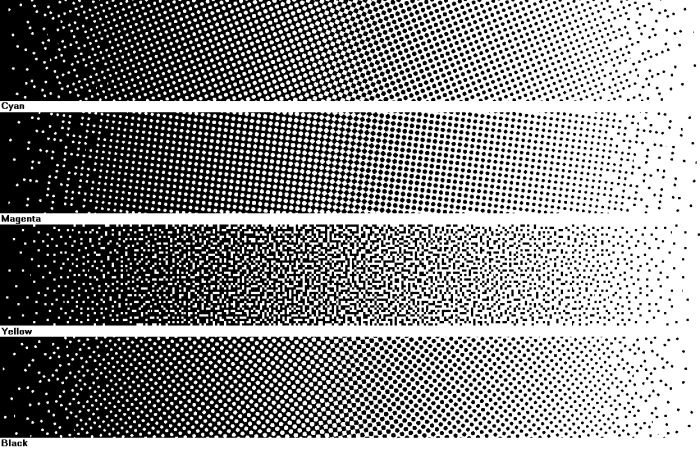

Hybrid screening transitions from AM to FM methods at a minimum dot size. At densities above or below these thresholds, dots are held to that minimum size, and density is reproduced by removing dots in an FM or "stochastic" pattern. This is illustrated by the above gradient.
This technique can be used to eliminate the "highlight break" that occurs in screen and flexo printing due to physical issues with small dots. It is widely used to address similar issues in offset printing. It can also be used to eliminate "plugged holes" in the shadow areas of inkjet separations. To address both types of problems independently, Wasatch SoftRIP allows for independent setting of the thresholds for highlights and shadows.

In the above illustration, a fairly large dot (74 microns) has been selected to eliminate "plugging holes" on an inkjet separation film, while a somewhat smaller dot has been selected to address the highlight break on press while producing a less "grainy" print than would occur with the shadow dot size.
Ideal setting of the highlight and shadow controls can be based on dot size if you already have some idea of the desired sizes in microns. Keep in mind that these displayed sizes are "nominal", and that your films, screens, or plates, will probably vary due to dot gain.
If you'd like to determine these settings by the printing of test strips, it is important to realize that the "percent" displays refer to percents downstream of calibration curves. Ensure that you print your test patterns with all calibration curves and other color transforms turned completely off, and determine these hybrid settings based on those tests.
Subsequent setting of the calibration curves through your linearization process will move those transitions up or down relative to your test pattern, but the minimum dot sizes that you've established by this process will remain constant.
This Hybrid method can be combined with the Rosette/Stochastic Hybrid method to address both minimum dot sizes and 15 degree moiré simultaneously, producing a separation such as this:
